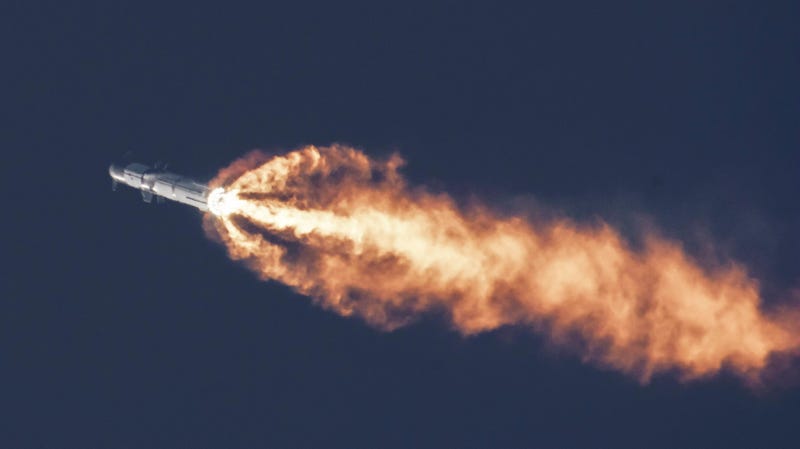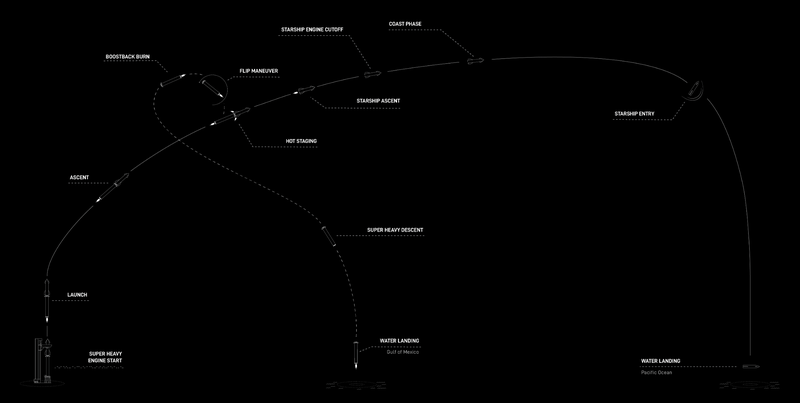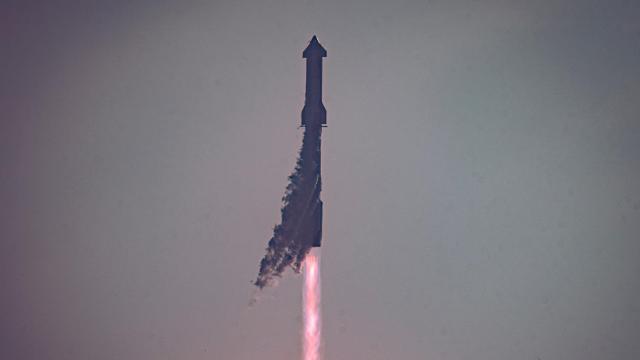Later this week, SpaceX is poised for a highly anticipated, and undoubtedly exciting, second test flight of its Starship megarocket—provided it receives the final regulatory approvals. Here’s what you need to know about this critically important test.
The Elon Musk-led company is targeting Friday, November 17 for the second test flight of its Starship megarocket—pending the final go-ahead from regulatory bodies. The upcoming flight follows the first test on April 20, which ended with the rocket’s destruction over the Gulf of Mexico. Since then, SpaceX has undertaken 63 corrective actions as mandated by the Federal Aviation Administration (FAA).
Standing 400 feet (122 meters) tall, Starship is the most powerful rocket ever built. The megarocket is crucial for SpaceX as it’s central to the company’s goals for more ambitious space missions, including potential trips to Mars. For NASA’s Artemis Moon program and the broader spaceflight community, Starship promises a revolutionary leap, as the rocket will allow for more flexible and cost-effective missions to space.
Lessons learned
The first test flight revealed many key areas for improvement; the rocket needed “well over a thousand” changes prior to the second mission, Musk said in June. First and foremost, the lack of protective infrastructure at the Boca Chica launch mount proved to be a significant oversight. The force of the 33 Raptor engines, along with an achingly long 8-second firing sequence, shredded the area beneath the launch mount, sending debris and dust into the surrounding areas. In response, SpaceX constructed a water-cooled steel flame deflector to prevent a recurrence.

The newly implemented water deluge system is being scrutinized by the U.S. Fish & Wildlife Service and the FAA for potential environmental impacts; this represents the final regulatory hurdle for SpaceX. The fact that SpaceX has chosen November 17 as the tentative launch date implies that the company expects to receive the necessary launch license soon. Or it could be a way to pressure the regulators into issuing the license.
Another area of focus is the rocket’s self-destruct mechanism. During the first test, the rocket failed to respond immediately to the self-destruct command, leading to a dangerous delay. SpaceX has since refined this system to ensure a more rapid response.
A crucial technical advancement for the upcoming flight is the implementation of a hot-stage separation system. This system involves igniting the Starship upper stage prior to the separation from the lower stage, ensuring a smoother transition during ascent (stage separation did not go as planned during the inaugural flight, contributing to the rocket entering into a fatal tumble). Additionally, a new electronic Thrust Vector Control (TVC) system has been implemented for the Super Heavy Raptor engines.
Countdown and flight test timeline
The process of loading the propellants—liquid oxygen and liquid methane—will commence 1 hour and 37 minutes prior to launch. As the countdown progresses at the south Texas Starbase facility, the Raptor engines on both the Super Heavy booster and Starship will undergo a pre-launch procedure known as an engine chill, commencing at T-minus 19 minutes and 40 seconds. This process is crucial for conditioning the engines to handle the super-cold propellants during ignition and flight.
The flame deflector will kick in at T-minus 10 seconds, with the Raptor ignition sequence beginning at T-minus 3 seconds—a modification from the previous T-minus 8 seconds. This change aims to minimize potential damage to the launch infrastructure caused by the engines’ intense power.
Two seconds after the mission begins, the rocket will lift off the pad, marking the start of its ascent. Max Q, the point of maximum aerodynamic pressure, is expected to occur 52 seconds into the mission. This phase challenges the structural integrity of the rocket as it travels through the atmosphere at increasing speeds.

At 2 minutes and 30 seconds into the flight, an event termed MECO, or Most Engines Cut Off, will occur. This is a variation of the traditional Main Engine Cut Off, signifying the point when, presumably, a majority of the Raptor engines will shut down. Following this, at 2 minutes and 53 seconds, the booster will initiate its boostback burn startup. This maneuver involves a flip of the booster, setting it up for a rapid descent back to Earth. As part of this test flight, the booster will simulate a landing in the Gulf of Mexico, which is expected to happen around the seven-minute mark. This procedure is a precursor to future tests in which the booster will return to the Boca Chica site for vertical landings. The two-stage Starship is meant to be a fully reusable rocket.
Meanwhile, the Starship upper stage will continue along its journey, performing an engine cut-off at 8 minutes and 33 seconds into the mission. Its path will take it over the Caribbean, southern Africa, the Indian Ocean, and New Guinea, before making a planned splashdown in the Pacific near Hawaii. A critical phase of this journey will be the reentry maneuver at 1 hour and 17 minutes, followed by a simulated ocean landing at the 90-minute mark. It’s important to note that Starship will not complete a full orbit of Earth during this mission.
The success of each of these phases and stages, especially the hot staging and the reentry maneuvers, will be closely monitored, as they are crucial for the overall objectives of the test flight. Key questions include whether the 16 million pounds of thrust produced by the Raptor engines will damage the launch mount despite the water deluge system, if all 33 Raptor engines will ignite successfully, whether SpaceX will achieve hot staging on its first attempt, and if Starship can survive reentry.
SpaceX will take whatever happens with its second mission, learn from it, and use those lessons to improve the third. The idea that problems will arise is practically a certainty, given the company’s devotion to “rapid iterative development,” an approach that’s “been the basis for all of SpaceX’s major innovative advancements, including Falcon, Dragon, and Starlink,” according to the company.
The second Starship mission may or may not succeed, but one thing is for certain: It will not be a dull affair, for better or worse.
